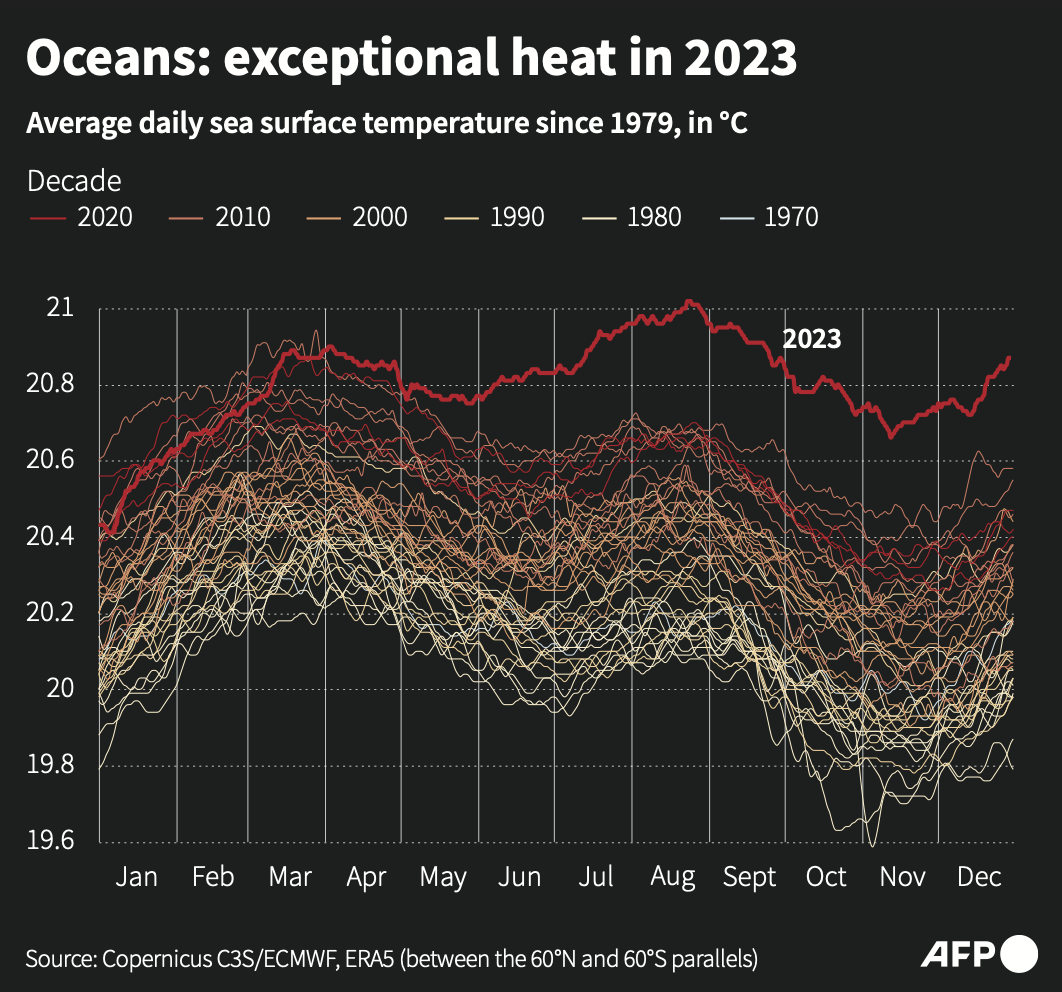Dubai-bound flight faces 6-hour delay as passenger opens cabin door to do suicide
The incident occurred around 9 pm on Monday. Emergency services transported the...

Study shows alarming ocean situation due to global warming
In 2023, an annual report published on Thursday revealed that the world’s oceans absorbed an enormous amount of excess heat, equivalent to ‘boiling away billions of Olympic-sized swimming pools.’
Oceans, covering 70 percent of the planet, have maintained the Earth’s livable surface by absorbing 90 percent of the excess heat produced by carbon pollution from human activity since the dawn of the industrial age.
Estimates from the US National Oceanic and Atmospheric Administration (NOAA) and the Chinese Institute of Atmospheric Physics (IAP) indicated that in 2023, the oceans absorbed around 9 to 15 zettajoules more heat than in 2022. One zettajoule of energy is roughly equivalent to ten times the electricity generated worldwide in a year.
“Annually the entire globe consumes around half a zettajoule of energy to fuel our economies,” according to the statement.
“Another way to think about this is 15 zettajoules is enough energy to boil away 2.3 billion Olympic-sized swimming pools.”

In 2023, a study published in the journal Advances in Atmospheric Sciences reported that both sea surface temperature and the energy stored in the upper 2000 meters of the ocean reached record highs.
The amount of energy stored in the oceans, a key indicator of global warming less affected by natural climate variability than sea surface temperature, contributed to making 2023, a year marked by heatwaves, droughts, and wildfires, the hottest on record.
Warmer oceans result in increased heat and moisture entering the atmosphere, leading to more erratic weather, such as fierce winds and powerful rain. Global warming, primarily caused by the burning of fossil fuels, is the main driver of rising sea surface temperatures.
The study also highlighted that El Nino, a naturally occurring weather phenomenon that warms the sea surface in the southern Pacific every few years, is expected to peak in 2024. Conversely, La Nina periodically cools the ocean surface.
The rising water temperatures and ocean salinity, also at an all-time high, contribute to a process of ‘stratification,’ where water separates into layers, affecting the exchange of heat, oxygen, and carbon between the ocean and atmosphere. This has implications such as a loss of oxygen in the ocean. Scientists express concern about the long-term capacity of the oceans to continue absorbing 90 percent of the excess heat from human activity.
Catch all the International News, Breaking News Event and Latest News Updates on The BOL News
Download The BOL News App to get the Daily News Update & Follow us on Google News.